Predatory Journals: What You Should Know
- Written by Judy Knight, MLS, Research Librarian
If you are writing a paper with the goal of publishing, an important part of the process will be determining where to submit your article. Many factors should be considered in reviewing the appropriateness of a journal for submission, including the journal’s aims and scope, target audience, and its instruction for authors.
Another important issue to consider is whether you may be submitting your paper to a “predatory” journal. While there is no agreed upon definition of a predatory journal, it is generally thought to be a journal that exhibits deceptive, unethical, or exploitative publishing practices. This often includes a questionable peer-review process, a pay-to-publish model, and a lack of transparency and quality control. Unfortunately, predatory journals are increasing in all disciplines, including business.
Earlier this year, the Federal Trade Commission fined the OMICS Publishing Group 50 billion USD for unfair and deceptive practices involving over 700 of its journals. The summary judgment cited misleading peer review and publishing fees, as well as false journal impact factors and indexing claims. This is the first legal case of its kind, and hopefully it will result in more oversight and accountability.
In the meantime, it can be challenging to determine if a journal falls into the predatory category. Jeffrey Beall, an American librarian at the University of Colorado, initially brought attention to predatory journals with his “Beall’s List of Predatory Journals and Publishers.” Beall stopped maintaining the list in 2017, but the list can still be viewed here.
Cabells Scholarly Analytics maintains a subscription-based “blacklist” of predatory and deceptive academic journals. Cabells uses 60 indicators to identify deceptive, fraudulent, or predatory practices. The indicators include questions of integrity, peer review, publication practices, indexing/metrics, fees, and other areas that are categorized as severe, moderate, or minor indicators. The full blacklist criteria and indicators are useful to review and can be found here.
Common red flags of predatory journals:
- In spite of peer review claims, evidence of very little peer review or none at all. A clearly stated peer review policy may also be lacking.
- False claims of indexing in research databases.
- False claims of impact factor or misleading metrics that are not acceptable practice.
- Non-disclosure of author fees required to publish until after an article is submitted.
- Editorial board with minimal information disclosed. The editorial board members may also be listed without their knowledge or permission. If questionable, it is advisable to investigate by contacting editorial board members.
Part of the challenge lies in distinguishing predatory journals from journals that are simply low quality. It is also important to recognize the increasing number of legitimate open-access journals where authors must pay a fee to retain copyright and make their work freely available, versus pay-to-publish predatory journals.
Journals that are suspect should be evaluated on a case-by-case basis. The following resource is highly recommended to help make an informed decision:
Think. Check. Submit.
This website offers a checklist that was developed to assist researchers to determine whether a journal is trustworthy or not. It is produced with the support of the Committee on Publication Ethics (COPE) and other organizations that promote ethical publishing. Please note that the checklist provides guidance but does not make a determination regarding specific journals.
It is also advisable to check a publisher’s membership in the following organizations:
Committee on Publication Ethics (COPE)
Members follow the highest standards of publication ethics and apply COPE principles of publication ethics outlined in the core practices. Members adhere to COPE’s “Principles of Transparency and Best Practice in Scholarly Publishing.”
Open Access Scholarly Publishers Association (OASPA)
Members undergo a strict initial review procedure and must continue to exemplify high standards to maintain membership in OASPA.
If you have any questions or need additional information, please contact Judy Knight MLS, ISM’s librarian, at This email address is being protected from spambots. You need JavaScript enabled to view it.
This article originally appeared in ISM's 2019 Summer Newsletter.






